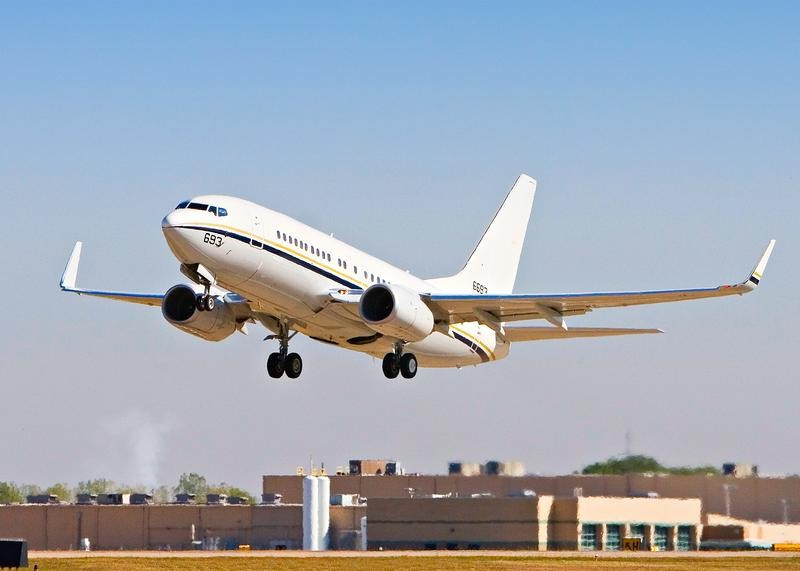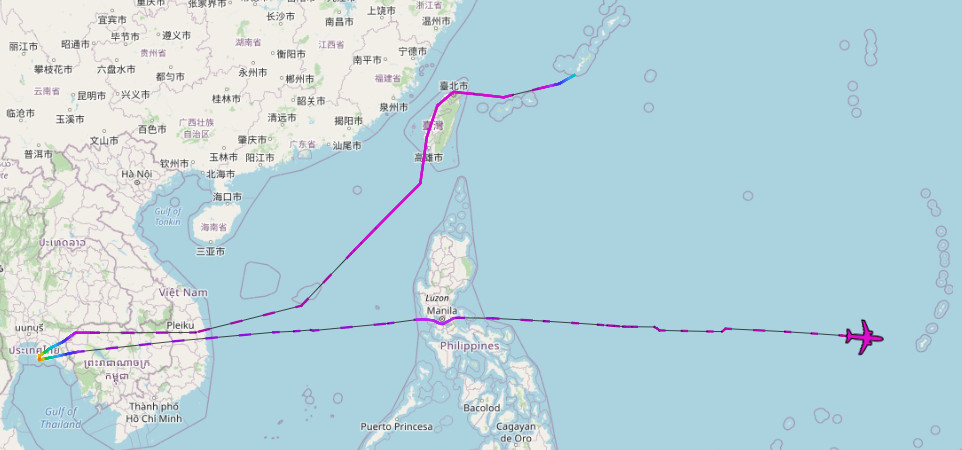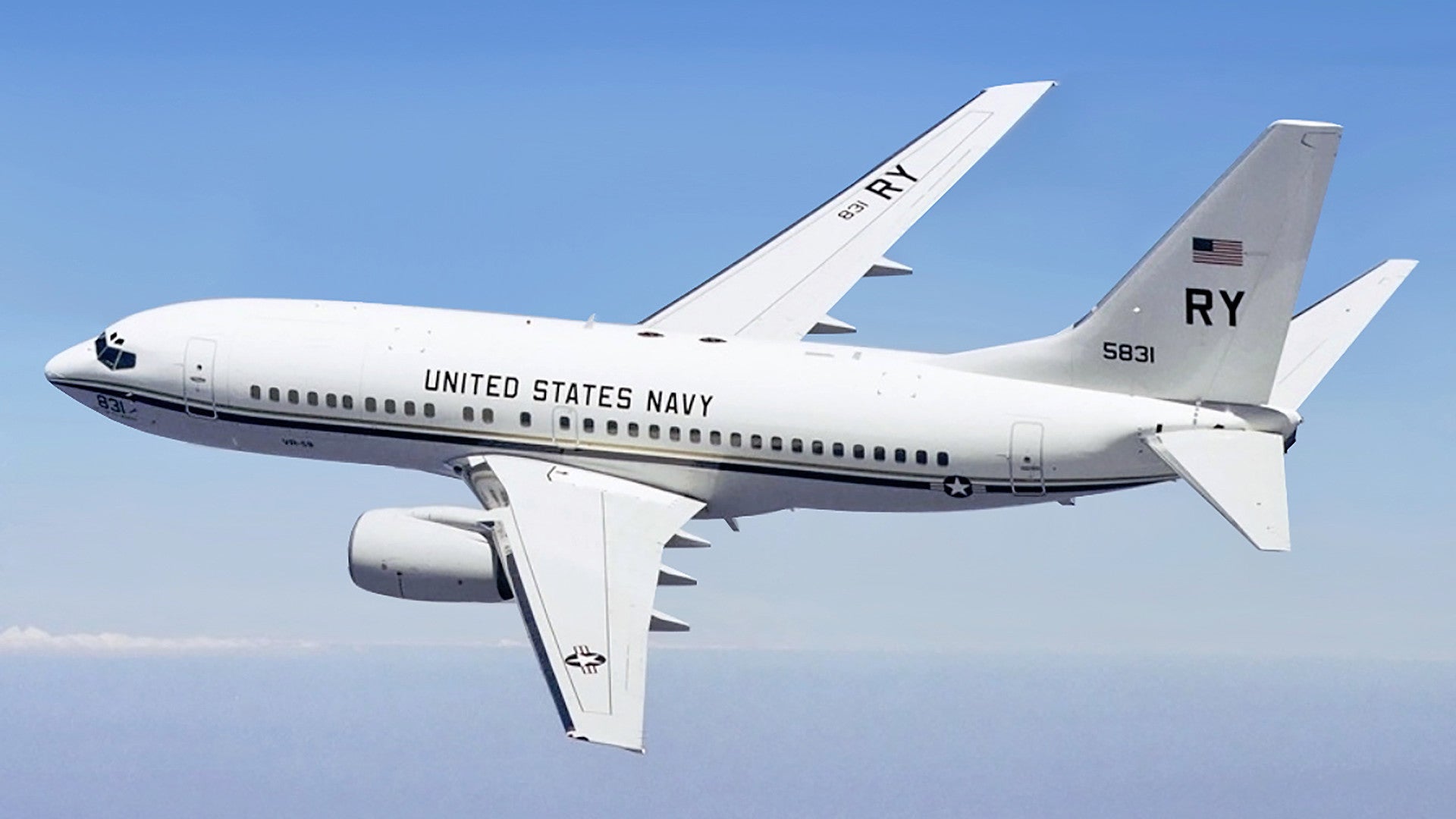Taiwanese fighter jets reportedly “drove off” Chinese Su-30 Flankers after the latter briefly entered the island’s air defense identification zone earlier today. That incident came after a U.S. Navy C-40A Clipper passenger transport aircraft flew an extremely unusual route over Taiwan’s western coast, a flight that was almost sure to draw some form of rebuke from authorities in Beijing, who consider the island part the country’s sovereign territory.
Taiwan’s Ministry of Defense announced that the aerial altercation had occurred to the southwest of the island on June 9, 2020. The Ministry’s statement said that unspecified Taiwanese Air Force fighter jets had intercepted the Chinese Flankers and issued verbal warnings for them to leave the area before more forcefully driving them out of the area.
Following an increase in Chinese military flights around the island in recent years, Taiwan’s President Tsai Ing Wen, who won a second term in a landslide in January, has previously said that Taiwanese jets would conduct a “forceful expulsion” of any Chinese combat aircraft that crossed the so-called “Median Line” in the Taiwan Strait. The Median Line is the de facto boundary between the island and the People’s Republic of China on the mainland, the latter of which sees Taiwan as an integral part of its national territory.

The Chinese People’s Liberation Army has been conducting major exercises in the South China Sea to the southeast of Taiwan, including with its new aircraft carrier, the Shandong, which many experts and observers have taken to be a signal aimed at Taiwanese authorities. Beijing routinely threatens to use military force if the government in Taipei moves to formally declare independence. Notably, the PLA’s largest land training facility at Zhurihe, which you can read about in this recent War Zone feature, has a highly accurate mockup of Taiwan’s President Office Building, as well as one representing the Taiwanese Ministry of Foreign Affairs building and other full-scale urban structures.
The rhetoric between Beijing and Taipei had ratcheted up substantially after Tsai’s election victory and has grown even more heated following her inauguration, in which she said that the island would move to further distance itself politically from the mainland. In addition to widespread domestic support for her government, the Taiwanese President has also enjoyed a particularly strong and close relationship with U.S. President Donald Trump’s administration. Taipei has secured unprecedented arms deals in the past year or so, including getting approval to purchase new, advanced Block 70 variants of the F-16C/D Viper fighter jet, something that the government in Beijing has said would be a “red line” issue in the past.
The United States technically recognizes the People’s Republic of China as the only legitimate government in China, but has reserved the right to continue to engage with Taiwan and help provide for its defense until its final status is officially resolved. As such, as friction between Beijing and Taipei has increased, the U.S. military has stepped up so-called Freedom of Navigation Patrols (FONOP) through the Taiwan straight, sending both ships and planes through the area as a demonstration of the United States’ ongoing commitment to Taiwan.
The C-40A flight, which took place on June 9 before the incident between Taiwanese and Chinese fighter jets, appears to be another example of that. However, while the Median Line in the Taiwan Strait, and the airspace above it, is technically a neutral international space, the Clipper’s route took it through actual Taiwanese airspace, where U.S. military aircraft generally don’t venture.

Plane spotters using online flight tracking software first noticed the C-40A appearing to leave Kadena Air Base on the Japanese island of Okinawa and then head southwest toward Taiwan. The aircraft, which has the Bureau Number serial number 169036 and is assigned to the Navy Reserve’s Fleet Logistics Support Squadron 61 (VR-61), based at Naval Air Station Whidbey Island in Washington State, then passed near Taipei on Taiwan’s northern tip before heading south along the coast.
Flight tracking data shows the aircraft then continued south into the South China Sea and then eventually made its way to U-Tapao Airport in Thailand. After leaving there, it appeared to fly toward the strategic island of Guam in the South Pacific.

The flight over Taiwan proper is a much more pointed demonstration of the de facto independence of the island and its ability to set its own rules about the use of its airspace that more traditional FONOPS. The Taiwan Times newspaper reported that Shih Shun Wen, a spokesperson for Taiwan’s Ministry of Defense, said in a statement that “the nation’s military has full control over the airspace over Taiwan and that the current situation is normal,” but declined to confirm or deny the C-40A had flown over the western coast. Taiwan’s China Times newspaper also reported that the Clipper had made an emergency landing at Ching Chuan Kang Air Base in the city of Taichung, but there is no evidence that this was the case.
It’s worth noting that the C-40A’s flight comes after weeks of other unprecedented aerial activity in the Pacific region. This has included a number of long-range sorties by U.S. Air Force B-1B bombers, many of which are clearly meant to send a message to China, as well.
The chill in relations between authorities in Taipei and their counterparts in Beijing does not look set to end any time soon. Relations between the two parties had already seen additional strains this year over the handling of the COVID-19 pandemic, and the Chinese government’s efforts to force Taiwanese authorities out of international response efforts, as well as the months-long crackdown on protests in Hong Kong over the mainland’s efforts to curtail that semi-autonomous region’s unique freedoms. Tsai Ing Wen’s government says it will look for ways to help Hong Kongers in response to the Chinese Communist Party proceeding with implementing a new draconian National Security Law covering the latter region.
With the parties on both sides of the Taiwan Strait, as well as the United States, digging in their heels, at least rhetorically, it seems more likely than not that we will continue to see more assertive signaling, including aggressive aerial encounters and FONOPS, in the near future.
Contact the author: joe@thedrive.com
